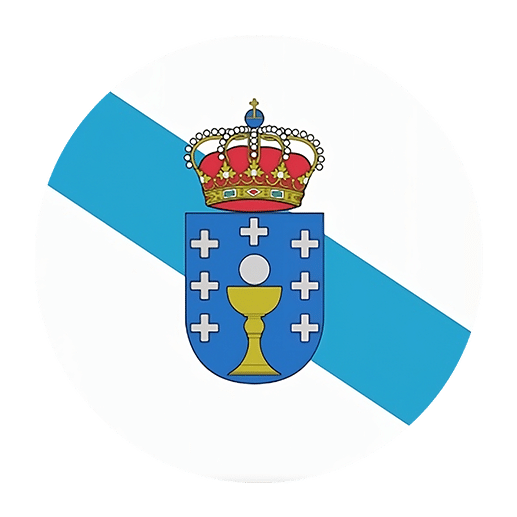Galician, a language spoken primarily in the Galicia region of Spain, possesses a rich and unique linguistic structure. One of its intriguing aspects is the use of partitive articles. Understanding how to use partitive articles with Galician nouns can significantly enhance your proficiency and fluency in the language. This article will delve into the nuances of partitive articles in Galician, explaining their functions, uses, and providing practical examples to illustrate these concepts.
What Are Partitive Articles?
Partitive articles are used to denote an unspecified quantity of something, often something that cannot be easily counted. In English, we often use phrases like “some” or “any” to express this idea. For instance, in the sentence “I would like some water,” the word “some” functions as a partitive article, indicating an indefinite amount of water.
Galician, like many other Romance languages, employs partitive articles to convey similar meanings. However, the usage and placement of these articles can differ significantly from English, making it essential for learners to understand their proper application.
The Basics of Partitive Articles in Galician
In Galician, partitive articles are formed by combining the preposition “de” (of) with the definite article. The definite articles in Galician are “o” (masculine singular), “a” (feminine singular), “os” (masculine plural), and “as” (feminine plural). When combined with “de,” they form the partitive articles “do” (masculine singular), “da” (feminine singular), “dos” (masculine plural), and “das” (feminine plural).
Here is a breakdown of how these combinations work:
– Masculine singular: de + o = do
– Feminine singular: de + a = da
– Masculine plural: de + os = dos
– Feminine plural: de + as = das
These partitive articles are used to indicate an unspecified quantity of a noun. For instance:
– “Quero do pan.” (I want some bread.)
– “Necesito da auga.” (I need some water.)
– “Compramos dos libros.” (We bought some books.)
– “Hai das froitas na cociña.” (There are some fruits in the kitchen.)
Usage of Partitive Articles with Countable and Uncountable Nouns
The application of partitive articles in Galician varies depending on whether the noun is countable or uncountable.
With Uncountable Nouns
Uncountable nouns refer to things that cannot be individually counted, such as substances or abstract concepts. In English, these are often mass nouns like water, rice, and advice. In Galician, uncountable nouns typically use partitive articles to indicate an indefinite amount.
Examples:
– “Quero do leite.” (I want some milk.)
– “Necesito da fariña.” (I need some flour.)
– “Compramos do viño.” (We bought some wine.)
In each of these examples, the partitive article indicates an unspecified quantity of the uncountable noun.
With Countable Nouns
Countable nouns refer to items that can be counted individually, such as books, apples, and cars. When using partitive articles with countable nouns in Galician, the meaning often shifts to indicate “some” or “a few” of these items.
Examples:
– “Hai dos coches na rúa.” (There are some cars on the street.)
– “Necesitamos das cadeiras.” (We need some chairs.)
– “Compraron dos libros.” (They bought some books.)
Here, the partitive articles “dos” and “das” suggest an indefinite but countable number of the nouns.
Contextual Usage and Nuances
Understanding the context in which partitive articles are used is crucial for mastering their application. While the basic rules are straightforward, nuances in usage can depend on the specific context and the speaker’s intention.
Specificity and Indefiniteness
Partitive articles in Galician often convey a sense of indefiniteness or generality. They are used when the exact quantity is not specified or when referring to a portion of a larger whole.
Examples:
– “Quero do queixo.” (I want some cheese.) – Here, “do queixo” implies an indefinite amount of cheese from a larger quantity.
– “Comemos das galletas.” (We ate some cookies.) – “Das galletas” indicates an unspecified number of cookies.
Negative Sentences
In negative sentences, partitive articles are used similarly to their positive counterparts, but they often translate to “any” in English.
Examples:
– “Non hai do pan.” (There isn’t any bread.)
– “Non necesitamos da auga.” (We don’t need any water.)
Questions
In questions, partitive articles are used to inquire about an unspecified quantity.
Examples:
– “Tes do azucre?” (Do you have any sugar?)
– “Hai das mazás?” (Are there any apples?)
Regional Variations
It’s worth noting that regional variations within Galicia may influence the use of partitive articles. While the standard forms “do,” “da,” “dos,” and “das” are widely used, local dialects and speech patterns may exhibit slight differences in usage or preference.
Common Mistakes and How to Avoid Them
As with any aspect of language learning, mastering partitive articles in Galician requires practice and attention to detail. Here are some common mistakes learners make and tips on how to avoid them:
1. Confusing Definite and Partitive Articles
One common mistake is confusing definite articles with partitive articles. Remember that partitive articles are formed by combining “de” with the definite article.
Incorrect: “Quero o pan.” (I want the bread.)
Correct: “Quero do pan.” (I want some bread.)
2. Overusing Partitive Articles with Countable Nouns
While partitive articles can be used with countable nouns, overusing them can lead to awkward or incorrect sentences. Ensure that the context justifies the use of a partitive article.
Incorrect: “Hai do coches na rúa.” (There are some cars on the street.)
Correct: “Hai dos coches na rúa.” (There are some cars on the street.)
3. Neglecting Gender and Number Agreement
In Galician, articles must agree in gender and number with the nouns they modify. Neglecting this agreement can result in grammatical errors.
Incorrect: “Necesito do auga.” (I need some water.)
Correct: “Necesito da auga.” (I need some water.)
4. Using Partitive Articles in the Wrong Context
Partitive articles should be used to indicate an unspecified quantity. Using them in contexts where a specific quantity is intended can lead to confusion.
Incorrect: “Compramos do libro.” (We bought some book.)
Correct: “Compramos o libro.” (We bought the book.)
Practical Exercises
To solidify your understanding of partitive articles in Galician, here are some practical exercises you can try:
Exercise 1: Fill in the Blanks
Complete the following sentences with the appropriate partitive article (do, da, dos, or das):
1. Quero _____ viño. (I want some wine.)
2. Necesitamos _____ froitas. (We need some fruits.)
3. Hai _____ leite na neveira. (There is some milk in the fridge.)
4. Compraron _____ libros novos. (They bought some new books.)
5. Tes _____ auga? (Do you have any water?)
Exercise 2: Translate the Sentences
Translate the following English sentences into Galician, using partitive articles where necessary:
1. I need some sugar.
2. Do you have any bread?
3. There are some chairs in the room.
4. She wants some cheese.
5. We bought some apples.
Exercise 3: Create Your Own Sentences
Write five sentences in Galician using partitive articles with both countable and uncountable nouns. Try to incorporate different contexts, such as positive statements, negative sentences, and questions.
Conclusion
Mastering the use of partitive articles with Galician nouns is a valuable skill that can enhance your fluency and comprehension of the language. By understanding the formation, usage, and contextual nuances of partitive articles, you can effectively communicate indefinite quantities and improve your overall proficiency in Galician. Remember to practice regularly, pay attention to gender and number agreement, and be mindful of the specific contexts in which partitive articles are used. With dedication and practice, you’ll find yourself navigating Galician conversations with confidence and ease.

